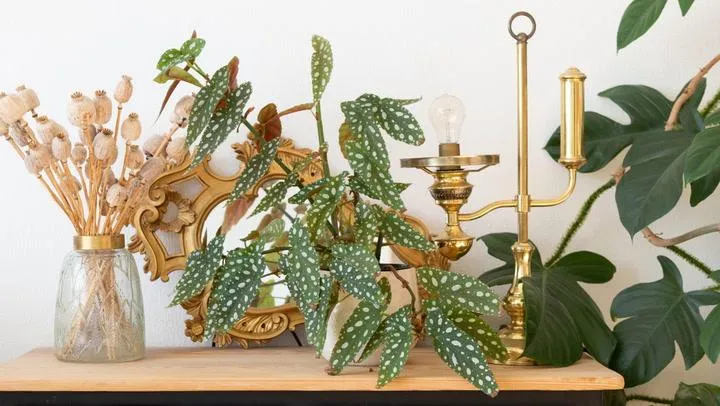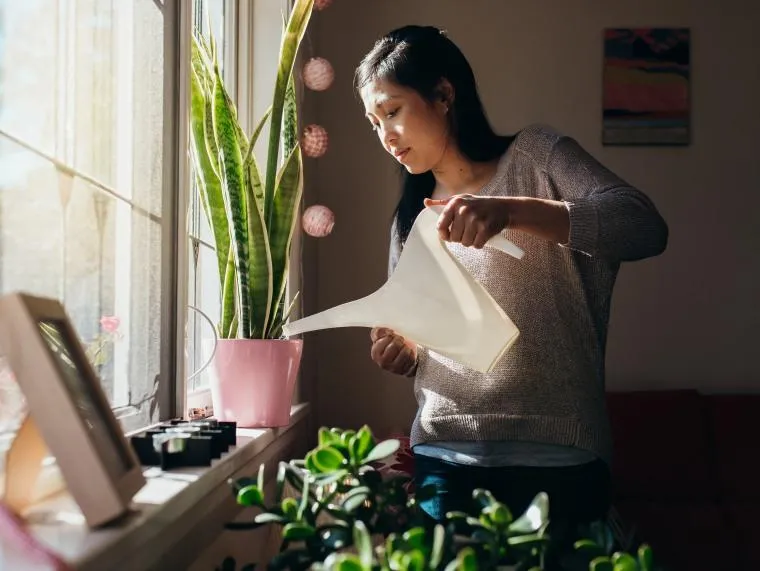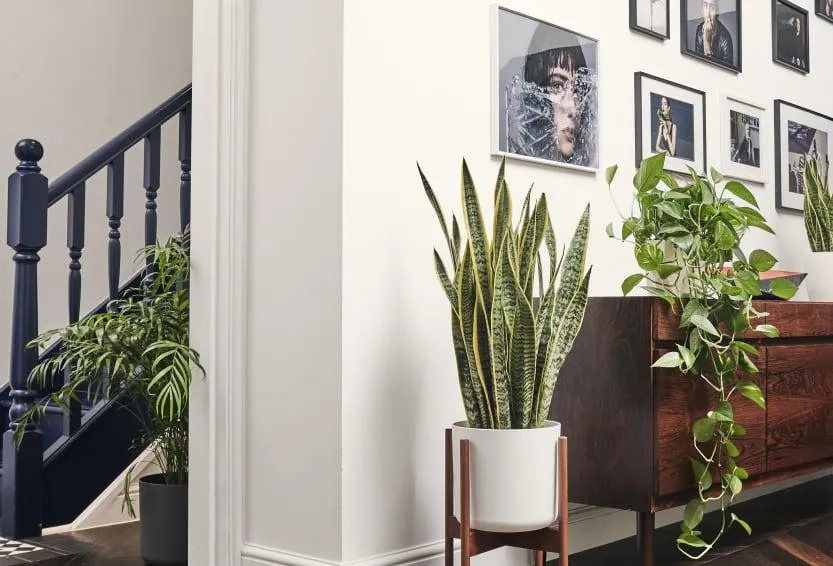Everything You Need to Know About Popular House Plant Varieties
As indoor plants become increasingly popular home décor accessories, many people find themselves wondering which plant varieties are easiest to care for. With so many options available at local nurseries and big box stores, it can feel overwhelming deciding what type of greenery will thrive in your home. In this article, I’ll break down 14 of the most common houseplants and provide tips to help ensure their long-term success indoors.
Pothos
One of the perfect plants for beginners, pothos is extremely low maintenance. With its heart-shaped green leaves, it’s easy to see why pothos tops lists of low light houseplants. These vining plants are happy to climb or trail and can even be trained up a moss pole. From my experience, pothos tolerates neglect better than most—even with inconsistent watering, it will continue growing. I also find it’s nearly impossible to overwater pothos. As long as the soil dries out between waterings, it adapts well to a variety of conditions.
Snake Plant
Snake plants, also known as mother-in-law’s tongue, are tough as nails when it comes to surviving indoors. With tall speckled leaves that resemble a snake’s skin, these plants thrive with infrequent watering. I just water mine about once every two weeks. Another reason snake plants succeed is because they do well in low light areas, like further from windows. They also remove toxins from your indoor air, like formaldehyde, making them almost working to have around.
ZZ Plant
Although they may look similar, ZZ plants differ from snake plants in a few ways. First, they have thick green leaves with white variegation resembling stalks of wheat. In my experience, ZZ plants need water about once a month or when the soil is completely dry. They can go even longer without water in the winter months when it’s drier inside. Another plus is that ZZ plants are highly tolerant of low light conditions, making them perfect for shady corners of homes. Their waxy leaves also repel dust!
Peace Lily
With lovely white blooms that emerge from its center, peace lilies are lovely additions to any home. These plants indicate when they need water by drooping their leaves—when this happens, it’s time to give them a thorough watering until the soil fully drains. As a helpful tip, I find it best to water peace lilies from below by setting the pot in a shallow tray of water for ten minutes or so. They also love high humidity, so I mist mine occasionally or group them with other plants. Peace lilies do best in medium to low light areas.

Spider Plant
Prolific baby plant producers, spider plants are enjoyable to watch multiply right before your eyes! With long green leaves and miniature plantlets that form along their stems, these are excellent for beginners. In my experience, they are very forgiving of occasional dry spells and adapt to many conditions. Spider plants thrive in medium to low light and produce more offspring when grown in bright areas. I water mine around once a week, but the soil should dry slightly in between. You can snip off plantlets to propagate more!
Chinese Evergreen
Featuring beautiful patterned or variegated leaves, Chinese evergreen comes in a variety of colors and textures. These plants grow well in medium to low light and prefer consistent moisture in the soil. I find they do best when allowed to dry out between waterings rather than being kept constantly soggy. Chinese evergreen is quite hardy, but their leaves can yellow or brown if allowed to dry out entirely, so it’s important to watch the soil moisture levels closely. They may drop leaves during seasonal transitions, but new growth will emerge.
Jade Plant
With their thick, deep green leaves in rounded or pointed shapes, jade plants add nice heft and structure to a collection. These succulent plants store water in their leaves well, so they thrive on neglect. In my experience, waiting to water until the leaves look shriveled is best. Then give them a thorough soak and allow the soil to dry fully before watering again. Jade plants prefer bright light and do best near sunny windows. They grow slowly but can live for decades if cared for properly. Their leaves may turn red in very bright conditions.
Monstera Deliciosa
With their large round leaves featuring elegant natural perforations, monsteras are a showstopper indoor plant. These vining plants climb or can be trained up a moss pole. They enjoy consistently moist soil and prefer bright, indirect light. I mist mine occasionally too to boost humidity. Monsteras grow slowly but produce striking aerial roots as they climb. As a word of warning, these plants are toxic to pets if ingested. Overall, monsteras thrive when given the right conditions but can handle some neglect if needed. I find their dramatic leaves well worth any extra care!
Dracaena
Featuring slender leaves in stripes of yellow, red, pink and more, dracaenas come in an array of beautiful colors. These sturdy plants adapt well to indoor conditions, preferring medium to low light. In my experience, dracaenas thrive with infrequent watering—I aim to keep the soil slightly moist but not soggy. They can handle drying out more than other common houseplants. Propagating new plants from stem cuttings is quite simple too. Dracaenas remove toxins from indoor air like formaldehyde, making them an attractive choice for any home.

Dieffenbachia
With their thick green and white variegated leaves, dieffenbachias make a bold statement. These plants enjoy moderate light and consistent moisture levels. In my experience, it’s easy for their soil to dry out too much between waterings if not monitored. Yellowing leaves often indicate underwatering. Like monstera, all parts of the dieffenbachia plant are toxic to pets and humans if ingested, so it’s best displayed out of reach. They grow well as tabletop plants or placed further back from busy areas. Dieffenbachias appreciate high humidity and thrive when soil is kept consistently moist.
Rubber Plant
With their thick lustrous leaves resembling rubber, these plants have an almost succulent texture. Rubber plants enjoy medium to low light conditions and prefer to dry out slightly between waterings. I typically allow the top inch or two of soil to dry before watering mine again. They grow tall but can also be pruned and shaped. Rubber plants remove toxins from air too. For best appearance, occasionally wiping their leaves with a damp cloth boosts shine. These plants can live for decades if given proper care.
Hoya
Available in many colors and leaf textures ranging from strawberry to splashy polychrome leaves, hoyas are popular houseplants. Defining features include waxy leaves and delicate floral bells forming along stems. In my experience, hoyas thrive on infrequent water similar to succulents. I water mine about every 2-3 weeks when the leaves start to look a bit deflated. They prefer well draining potting mixes and bright, indirect light. Patience is needed as hoyas often grow slowly but make rewarding long-term investments.
Philodendron
With heart or arrowhead shaped leaves available in solid green or attractive variegated forms, philodendrons come in various types suited for home environments. These vining plants climb well but can also trail if unsupported. In my experience, philodendrons grow vigorously and tolerate low to medium light indoors. I keep the soil consistently moist but not sopping wet. Propagating new plants from stem or leaf cuttings is simple too. Overall these adaptible plants infuse life and greenery into any decor.
I hope this comprehensive overview of popular houseplants answered all your questions! Feel free to reach out if you need any clarification or have additional inquiries. Growing indoor greenery can be highly rewarding with just a bit of care and attention to their specific needs. With practice, you’ll be an expert in no time. Happy planting!

Common Houseplant Varieties
| Plant | Light Needs | Water Needs | Care Level |
|---|---|---|---|
| Pothos | Low | Let dry slightly between waterings | Low |
| Spider Plant | Medium | Let dry slightly between waterings | Low |
| Snake Plant | Low | Let soil dry out between waterings | Low |
| ZZ Plant | Low | Let dry slightly between waterings | Low |
| Peace Lily | Medium | Let dry slightly before watering | Low |
FAQ
-
What are some common house plant varieties?
Basically, there are lots of plant types that do well indoors. Some popular choices are peace lilies, pothos, snake plants, spider plants, andChinese evergreens. These plants are pretty hardy and don’t need a ton of care.
-
How do I care for house plants?
Kinda takes some trial and error to figure out what your plants like best. You gotta water them when the soil is dry and place them in a spot with indirect sunlight. It also helps to mist them and check for pests. And maybe you should talk to them? Some people say their plants grow better if they chat with them!
Does anyone else find it totally weird how much plants grow towards the light? It’s like they’re suddenly plants with minds of their own, following the sun wherever it goes. Pretty amazing if you think about it too much! -
What types of plants are best for low light areas?
Plants that can tolerate low light include pothos, snake plant, ZZ plant, Chinese evergreen, and bamboo palm. These beauties don’t demand a lot of sunlight. At the same time, some folks have luck with english ivy and philodendrons in low light.
-
How often should house plants be watered?
Most sources say to water when the top inch or so of soil is dry. However, the timeframe can range from weekly to every couple of weeks, depending on the plant type and conditions. A good rule of thumb is to err on the side of underwatering rather than overwatering, which can potentially kill your plant.
-
What are some low maintenance house plants?
In my (questionably expert) opinion, snakes plants and pothos rank among the easiest houseplants to care for. They’re virtually impossible to kill through over or under watering. Chinese evergreens, ZZ plants, and bamboo palms also require minimal effort to keep happy and green. Frankly, if you can’t keep those alive, you might have a black thumb!

Pretty interesting how many plant varieties have basically evolved to thrive in our homes, right? Maybe it’s because homes today provide conditions similar to their natural habitats. Just don’t ask me for the science behind it – I’m no botanist! Anyway, hope this FAQ helped explain some basics of houseplants. Let me know if you have any other questions!
